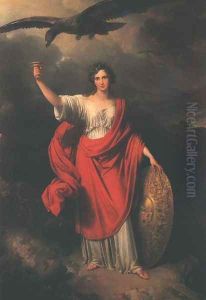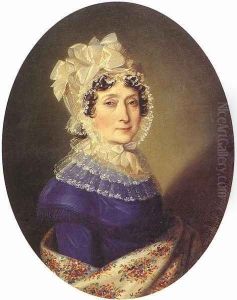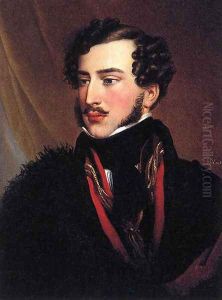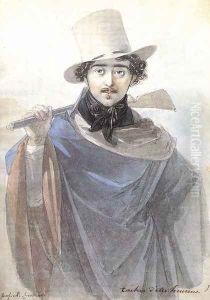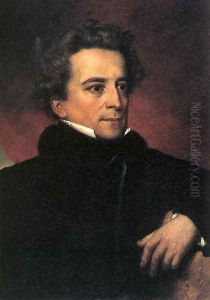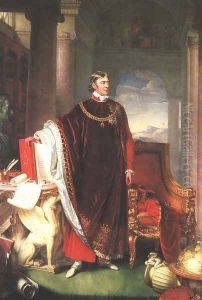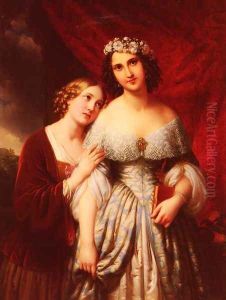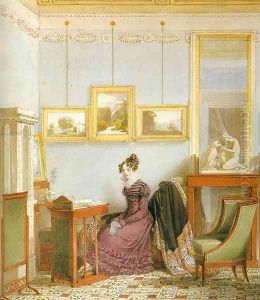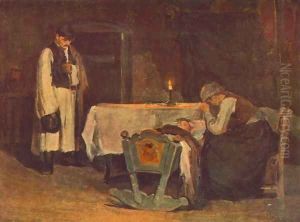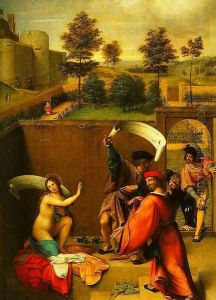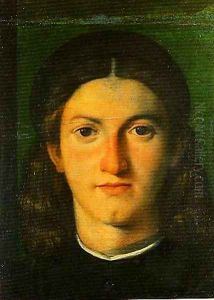Johann-Nepomuk Ender Paintings
Johann-Nepomuk Ender was an Austrian painter known for his portraits, historical subjects, and allegorical themes. Born on November 3, 1793, in Vienna, Austria, Ender was steeped in an environment rich with the cultural resurgence of the early 19th century. He showed an early inclination towards the arts, which was supported by his family. His twin brother, Thomas Ender, was also artistically inclined, primarily focusing on landscape painting.
Ender's education in art began at the Academy of Fine Arts Vienna, where he was not just a student but eventually became a significant figure. His talent was recognized early on, and he was awarded several prizes during his time at the academy, which helped establish his reputation in the Viennese art circles. His work was characterized by a meticulous attention to detail and a delicate handling of colors, which made his portraits highly sought after by the aristocracy and the burgeoning bourgeoisie.
In 1819, Ender won a prestigious scholarship that allowed him to travel to Rome, a journey that would profoundly influence his artistic style and direction. During his stay in Rome, he became acquainted with the works of classical antiquity and the Renaissance, which inspired him to incorporate elements of classical beauty and harmony into his own compositions. This period was also marked by his interaction with other artists and intellectuals, which further enriched his understanding and appreciation of art.
Upon his return to Vienna, Ender's reputation as a portraitist and historical painter continued to grow. He received commissions from some of the most distinguished families in the Habsburg Empire, and his works were exhibited in prominent venues. Notable among his oeuvre are portraits of Empress Elisabeth of Austria and other members of the imperial family, which stand as testament to his skill in capturing the likeness and character of his subjects.
Ender also ventured into religious and allegorical painting, imbuing his subjects with a sense of serenity and spiritual depth. His ability to blend the classical with the contemporary, and the sacred with the profane, made his works resonate with a wide audience.
Despite his success, Ender remained deeply committed to the development of the arts in Austria. He was involved in various artistic societies and played a role in shaping the cultural policies of his time. His dedication to art was not only limited to his own work but extended to nurturing the next generation of artists.
Johann-Nepomuk Ender passed away on March 16, 1854, in Vienna. His legacy is preserved in the many portraits and historical paintings that adorn museums and private collections. Through his work, Ender contributed significantly to the Austrian art scene of the 19th century, bridging the gap between the classical traditions and the emerging modern sensibilities of his time.
